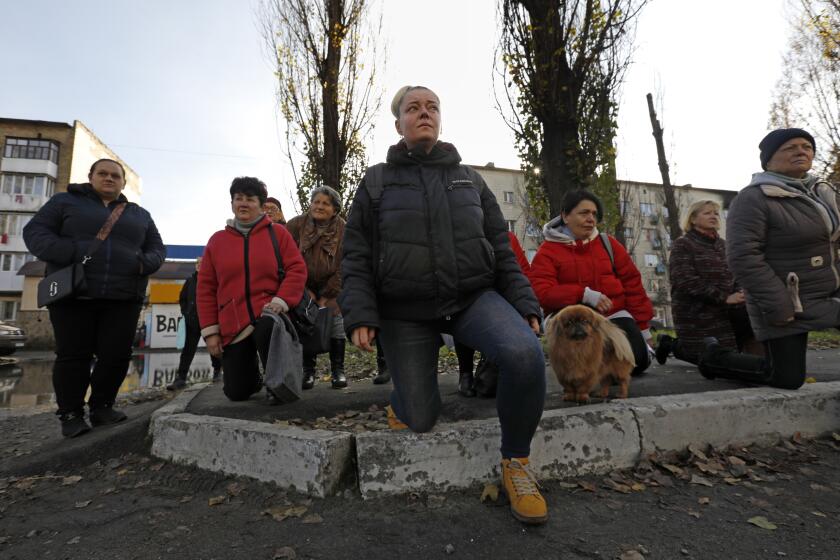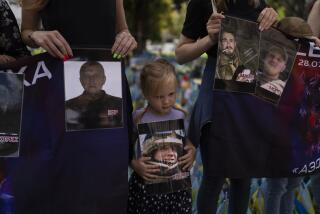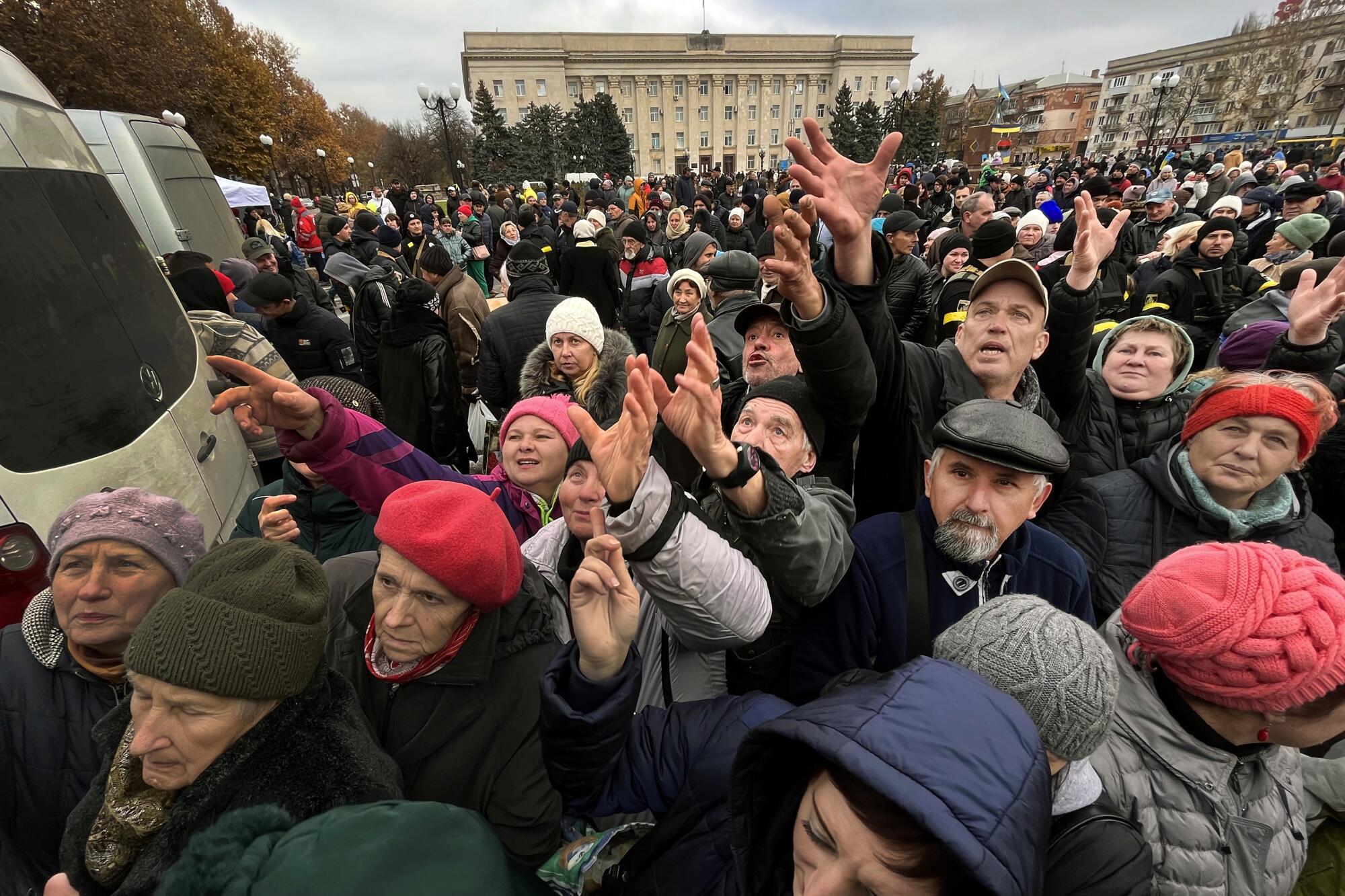
- Share via
KHERSON, Ukraine — First came rejoicing. Now comes the reckoning.
The southern Ukrainian city of Kherson, the only provincial capital captured by Russia since it invaded in February, is back in Ukrainian hands, though Moscow’s forces are still close enough to remain a menace.
The outburst of joy over the reclamation of Kherson — one of the most significant Ukrainian victories of the nearly 9-month-old war — is tempered by punishing hardships that still haunt the city: hunger and shortages of medicine as well as scant electricity, running water and communications.
Criminal and forensics investigators are rushing to document evidence of executions and torture, digging up bodies and coaxing traumatized witnesses to come forward. Already, case files are open on hundreds of suspected war crimes. Victims of torture haltingly recount their ordeals. De-mining teams are fanned out across the city and plying muddy fields in outlying former front-line villages, where wrecked military and civilian vehicles line battered roads.
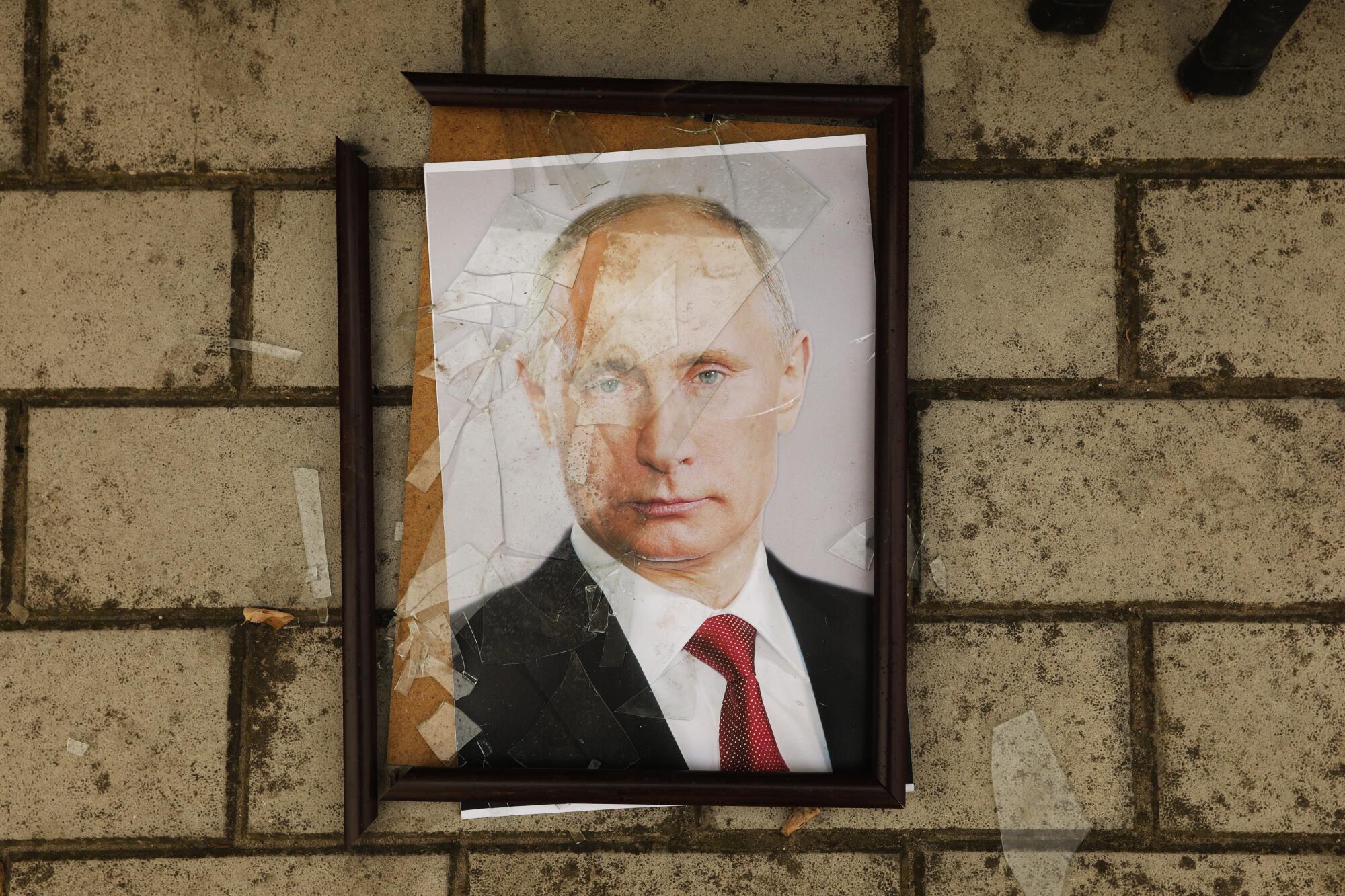
And in what might be the most insidious iteration of pain, Kherson’s people must now come to terms with the fact that some of their neighbors cooperated with the occupiers.
“I was so very disappointed,” one man said of learning that a professor from his old university, a onetime mentor, had sided with the Russians.
“Well, they can just f— off to Russia, those people who helped them,” said Iryna Lebid, a 58-year-old nurse.
On one Ukrainian street, surveying the wreckage wrought by nearly 9-month-old war. How best to rebuild?
Still, signs of recovery already dot a city where the first vanguard of Ukrainian troops entered only last week. At hastily created mobile and internet hot spots, people weep into their cellphones as they make contact with loved ones after months of isolation. Humanitarian aid is arriving by the truckload. In streets and squares, kids race up to Ukrainian troops, begging the soldiers to sign their Ukrainian flags.
Onlookers still wave bouquets at the roadside when military convoys pass by — Ukrainian ones now — after months of turning away and averting their eyes at the sight of Russian tanks and armored personnel carriers rumbling through their streets.
“We have our city back,” said Denys Bukhorin, wizened but grinning, as he stood in Kherson’s crowded central square with his teenage son, surveying the celebratory scene. “Next comes our country.”
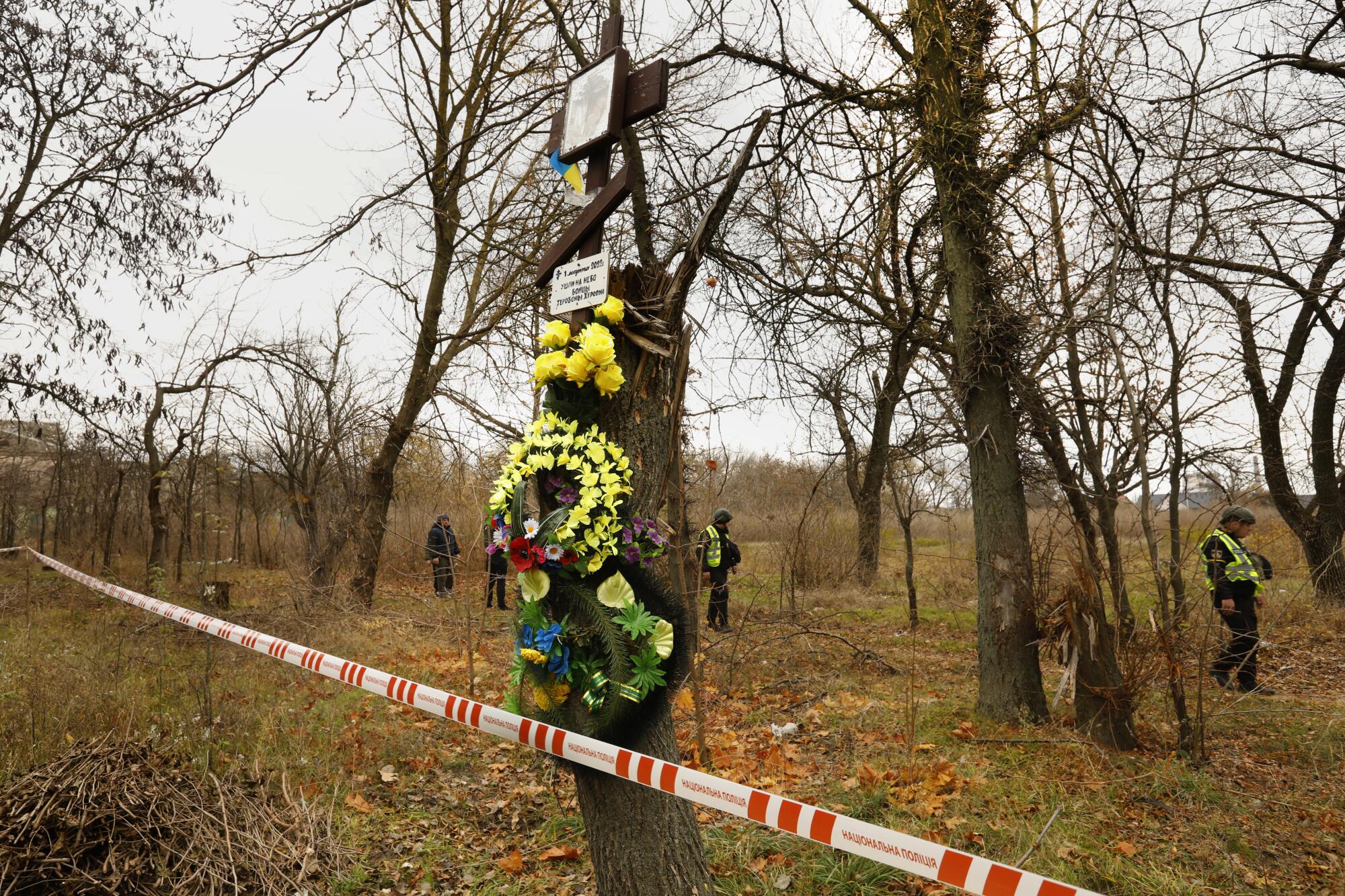
Red-and-white crime scene tape stretched across an entrance to Byskovy Park — named for the lilacs that used to grow there — on Kherson’s southeastern outskirts. That’s because Ukrainian authorities believe this patch of woodland was the scene of a gruesome crime days into the Russian invasion.
Behind the tape, faded bouquets were affixed to trees scarred by large-caliber bullets. It was here, witnesses have told investigators, that Russian troops rounded up and slaughtered at least 17 members of a civilian territorial defense unit in a hail of machine-gun fire on March 1. A local priest later buried the bodies and stealthily notified the slain men’s families if he could locate them, officials said.
“You have to understand, the territorial defense are not professional soldiers, just regular citizens — accountants and such, and lightly armed,” said Meri Akopyan, the country’s deputy interior minister, who was on hand to watch the national police at work. “Absolutely, they were executed.”
In the woods behind her, black-clad investigators moved through the underbrush searching for remains, marking spots where exhumations had occurred or where bodies — or body parts — were found.
In districts that were occupied earlier this year for little over a month by Russian troops outside Kyiv, investigators have found nearly 1,300 bodies of those killed during that time. Here in Kherson, which spent a full eight months under Russian control, that bleak harvest is likely to be far greater.
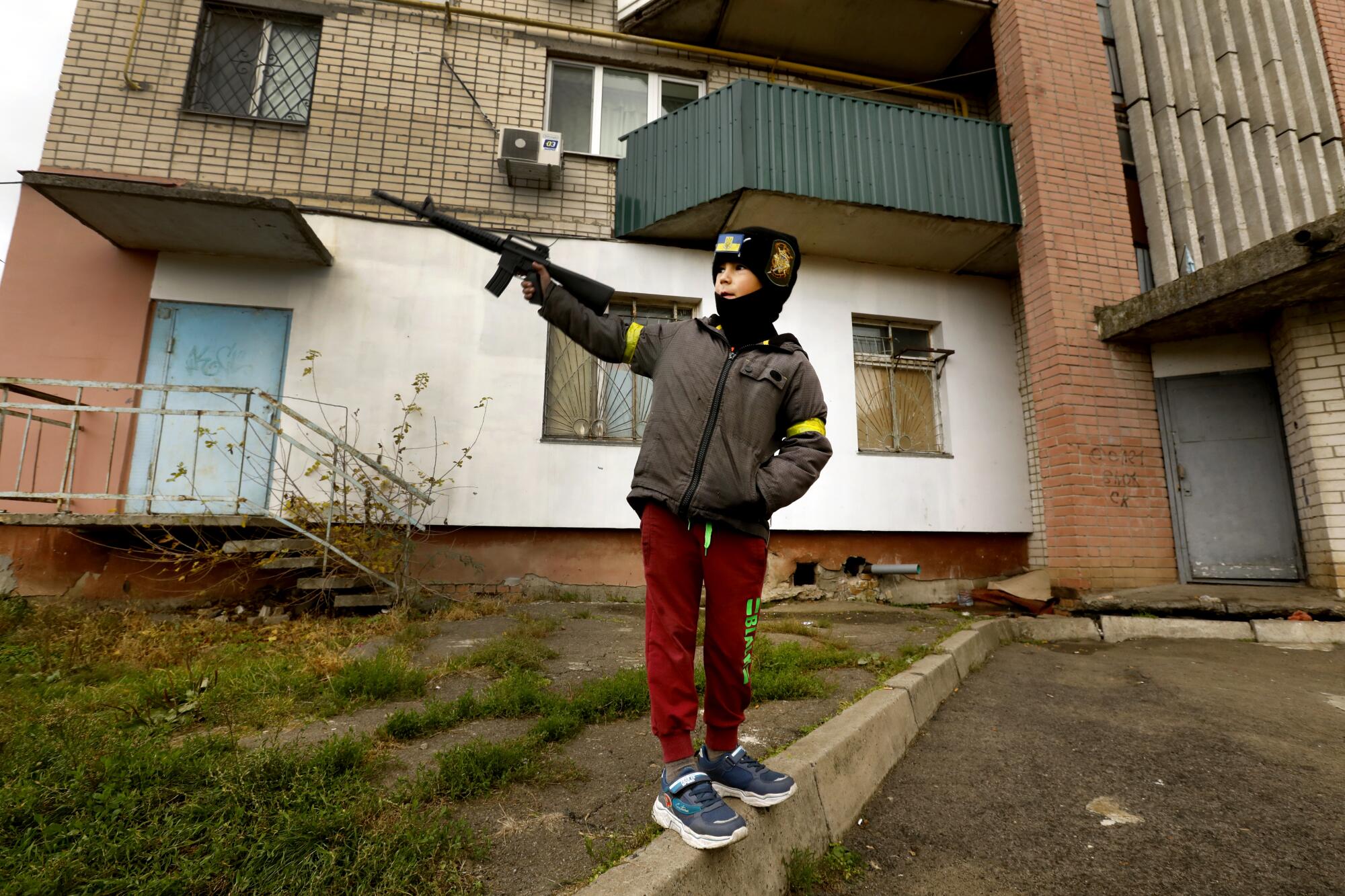
With bitter experience gained in places such as Bucha, the commuter town outside the capital where some of the worst of those early atrocities came to light, investigators are proceeding as carefully and methodically as possible, Akopyan said.
“Our big concern is to find and preserve all the evidence that we need to develop war-crimes cases,” she said. “There is a lot to be recorded. We have to be clear-minded and stay focused.”
Like law enforcement authorities and investigators, Akopyan said that she had already visited many scenes of suspected atrocities, including mass graves containing the bodies of civilians, some of whom apparently died under torture or were shot point-blank.
“We are almost past the point of surprise,” she said. “But you come to a place like this, and you find it shocking all over again.”
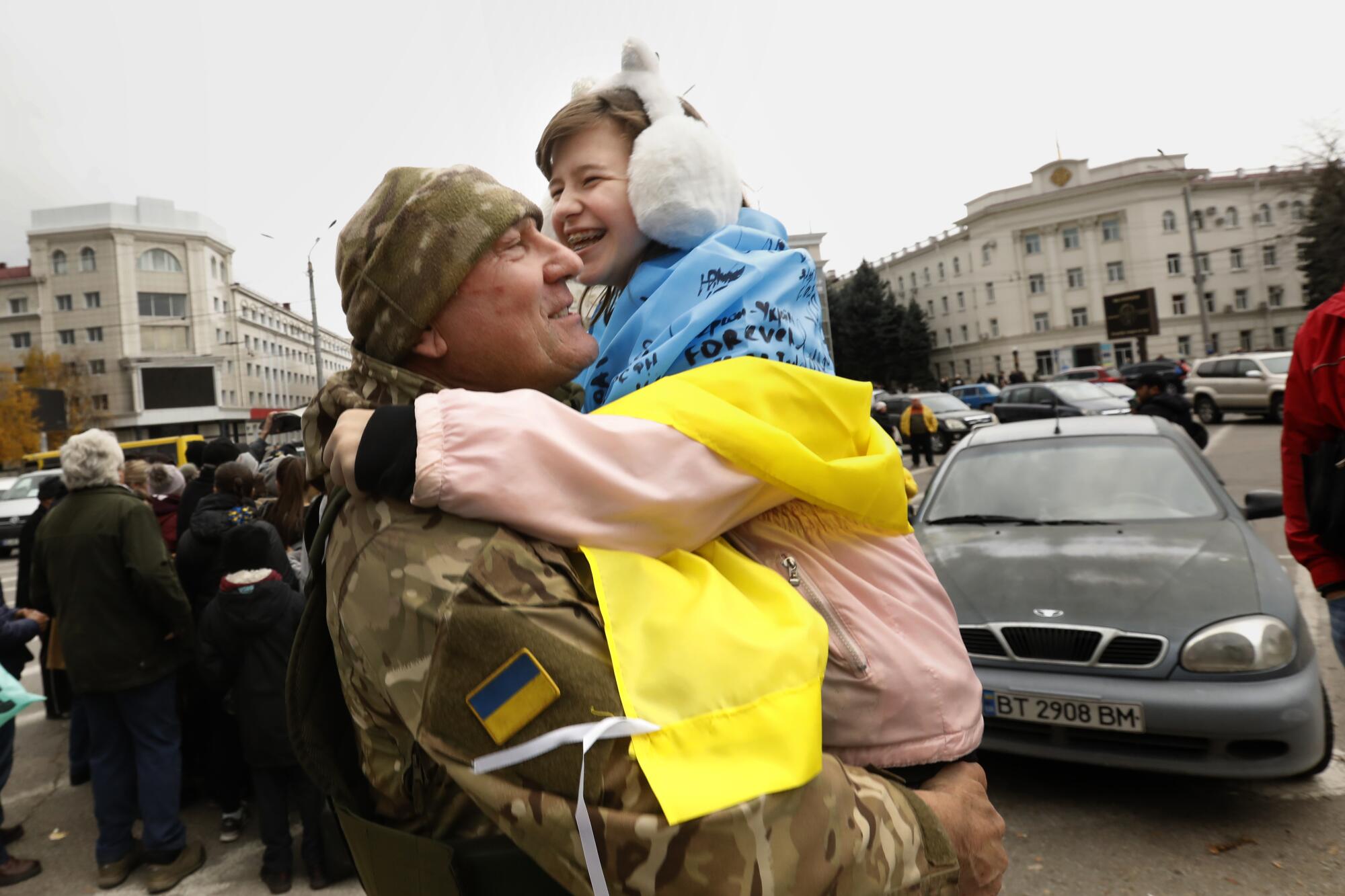
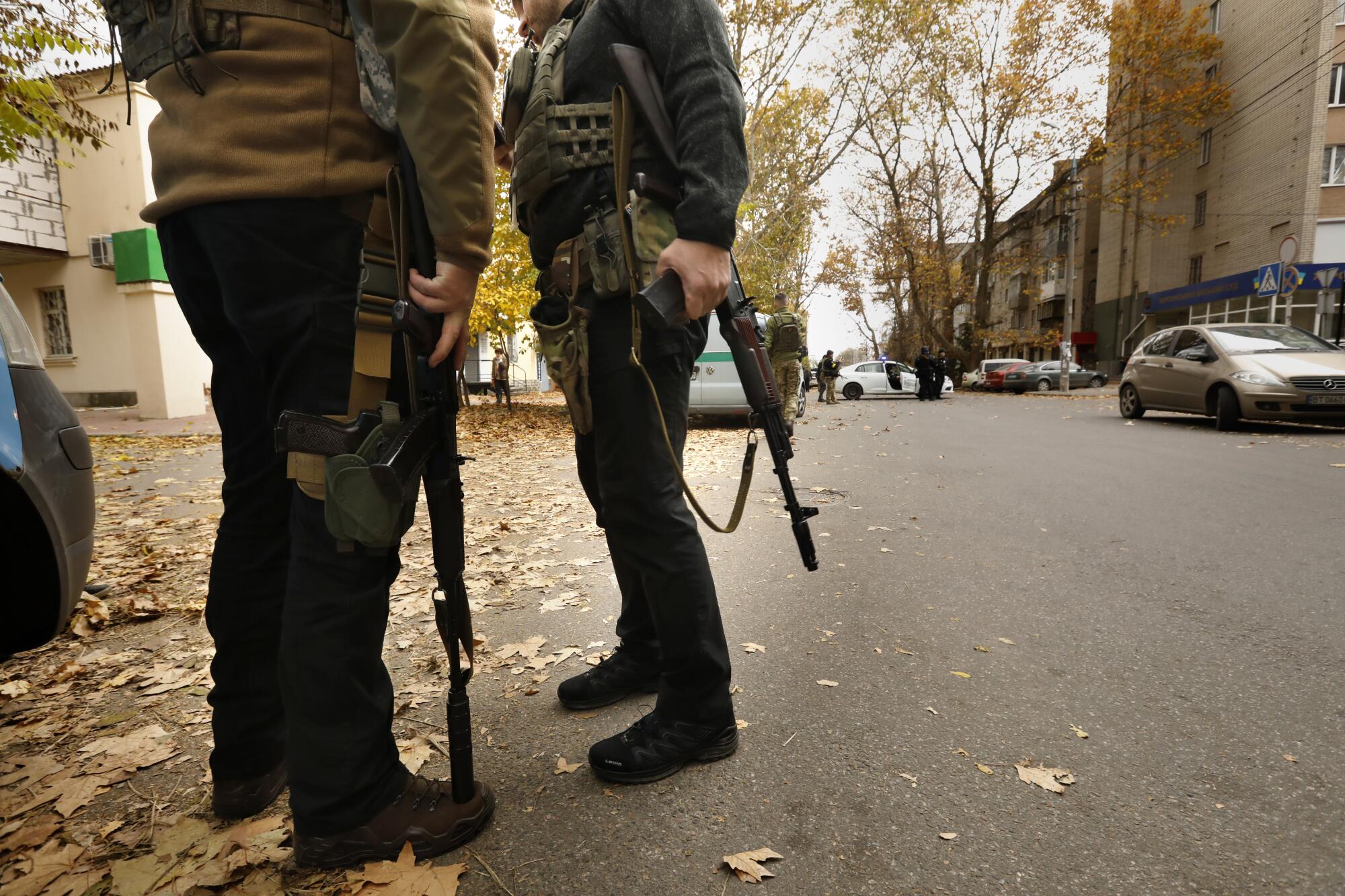
Few things are worse than knowing that a neighbor betrayed you. But that sickening sensation was experienced by many in Kherson, sometimes more than once.
Amid the revelry in the central square, Bukhorin told the story of a man sought by the Russians who was hiding in his neighborhood — until the occupiers found him.
“The Russians came and took him away, and we didn’t see him again,” said Bukhorin, 42, who was all but certain that someone living a few doors down had turned him in.
Kherson residents said pro-Russia authorities did their best to sow doubt and division among the approximately 80,000 people who remained in the city — about a quarter of the prewar population of more than 300,000. Often enough, they found collaborators.
Over the months, Russia systematically sought to tighten its grip, imposing a pro-Russia school curriculum and trying to force people to discard their Ukrainian passports for Russian ones and pay for goods and services in rubles. Punishment was swiftly meted out for any public expression of Ukrainian patriotism — displaying a flag, singing a national ballad, daubing a bit of blue-and-yellow graffiti.
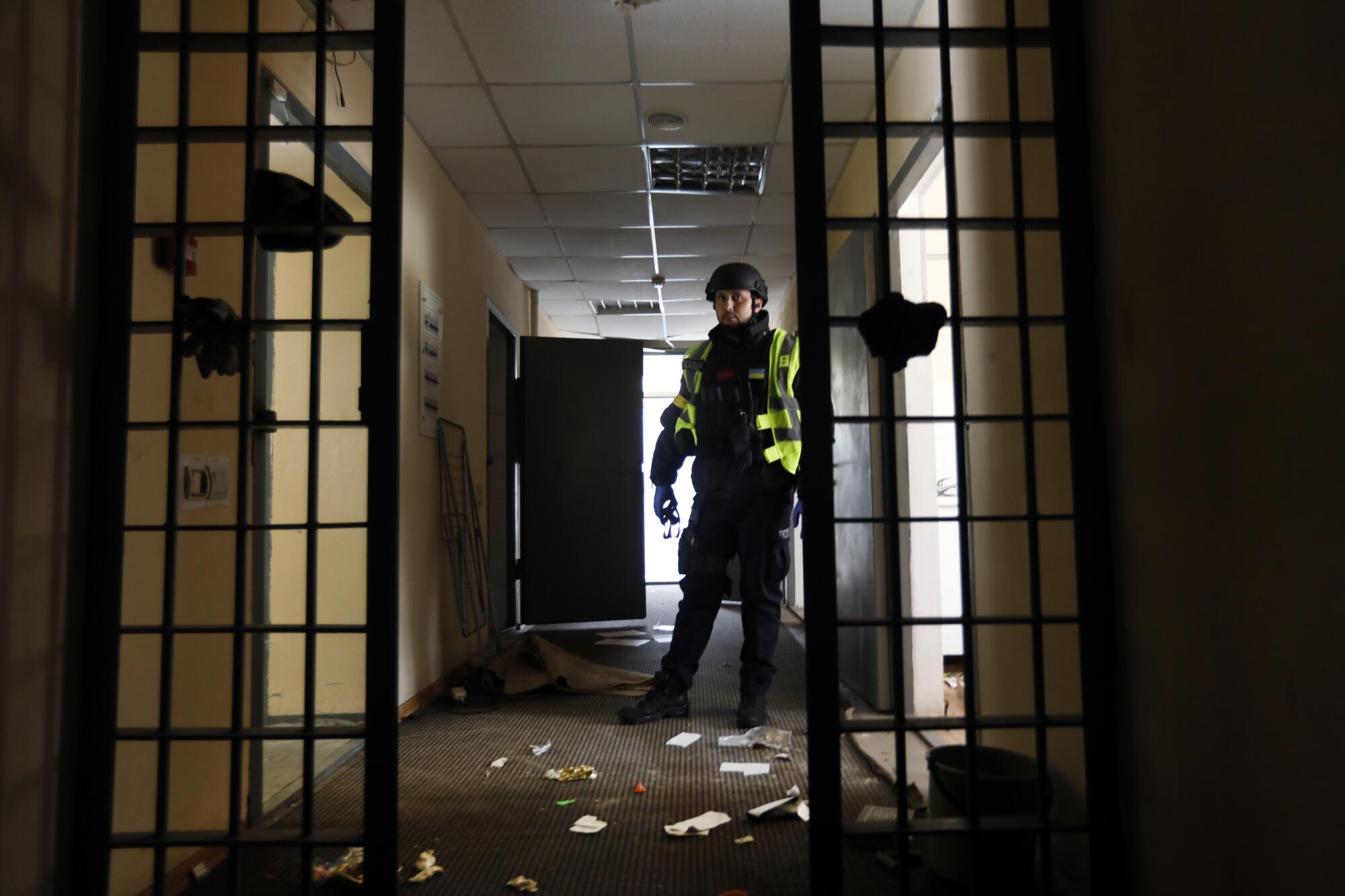
The attempted Russification came to a head in September, when Moscow-backed authorities in Kherson and three other Ukrainian provinces staged fake “referendum” votes asking if people wanted to be part of Russia. Unsurprisingly, the Kremlin proclaimed that the populace had overwhelmingly assented. On Sept. 30, Russian President Vladimir Putin declared that the four Ukrainian regions in question, including Kherson, were part of Russia for all eternity.
Stanislav Borodashkin, 32, a Kherson native, described his deep disillusionment when he learned that a lecturer from his university days had become an overt supporter of the illegal annexation and could be seen online participating in pro-Russia events.
“Before, I’d considered her a good person,” said Borodashkin, an elementary school teacher and part-time tour guide. “To me, it was as if that person had died.”
Lebid, the nurse who cursed the collaborators, said those in league with the Russians “would walk about with the air of noblemen.”
“It’s a moral offense,” she said. “No one forced them.”
Even amid the rejoicing, the mood in the city tilted toward retribution. A government-distributed news pamphlet — filled with helpful practical hints such as step-by-step instructions on canceling state vehicle registration if your car was stolen or destroyed by the Russian forces — devoted its lead headline to a stark warning.
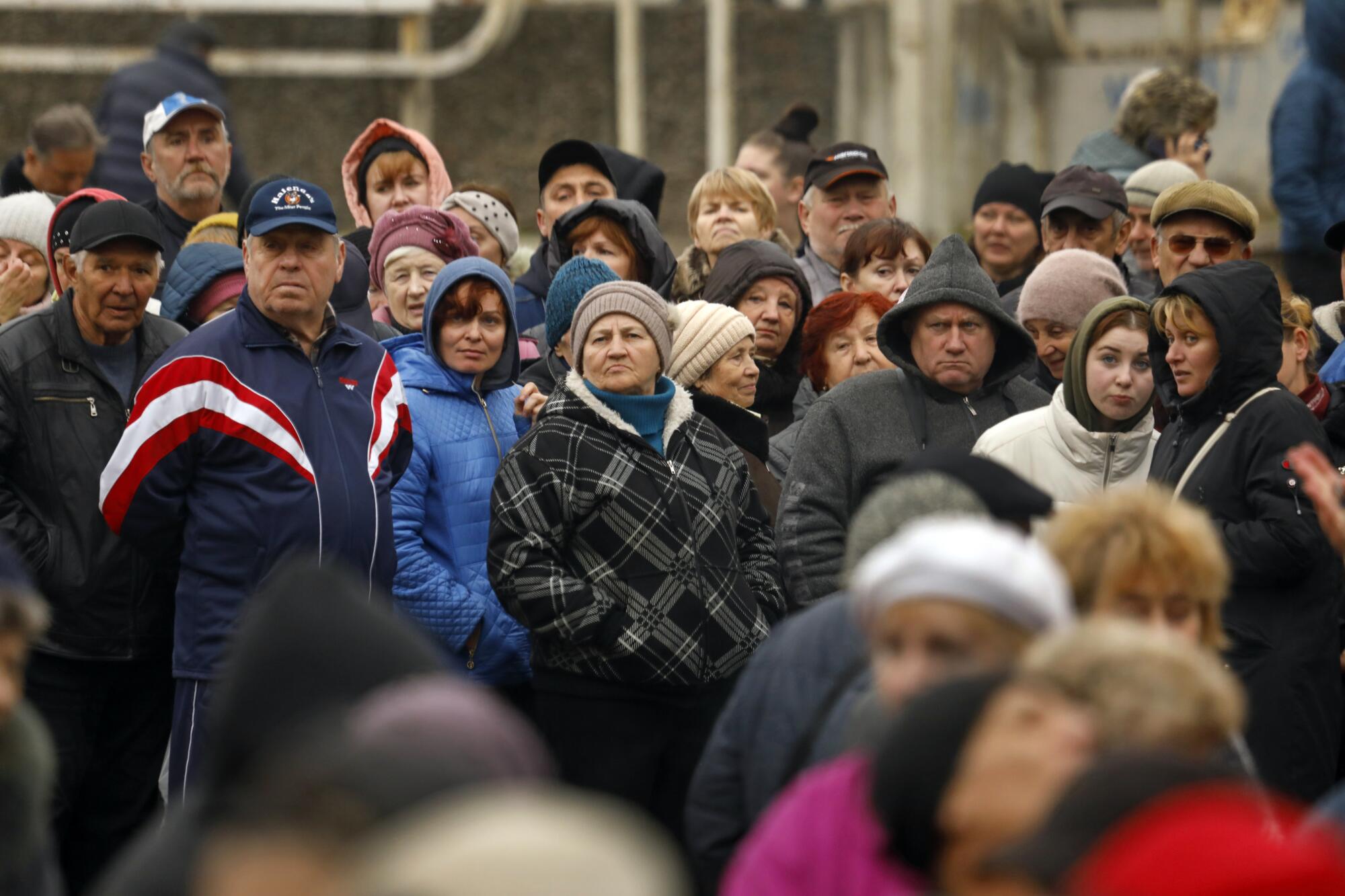
“We can guarantee collaborators one thing,” it said. “Accountability is inevitable.”
Those who defied the occupiers’ wishes earned gratitude. High school student Oleksandr Billii, 17, said every teacher in his school refused to instruct pupils in the Russia-backed curriculum.
“We’re proud of them,” he said. “It was the very best lesson they could teach us.”
Mykola Nehrov, a military veteran, said he spent three hellish weeks in Russian captivity, where he was beaten and subjected to electric shocks, along with other abuse he did not want to detail.
He said the Russians demanded again and again whether he had any connection with Ukrainian special forces they believed were carrying out behind-the-lines attacks in the city.
But he counted himself among the fortunate. At night, he would hear the screams of others being tortured.
“Others, and I am sure of this, did not survive,” he said.
“They worked round the clock,” he said of his captors. “It never stopped.”
Ukrainian authorities say they have uncovered a network of makeshift torture chambers in and near Kherson. The one where Nehrov was held was located in what had been a pretrial detention center in civilian times, on Energy Workers Street. He believes dozens were held at any given time.
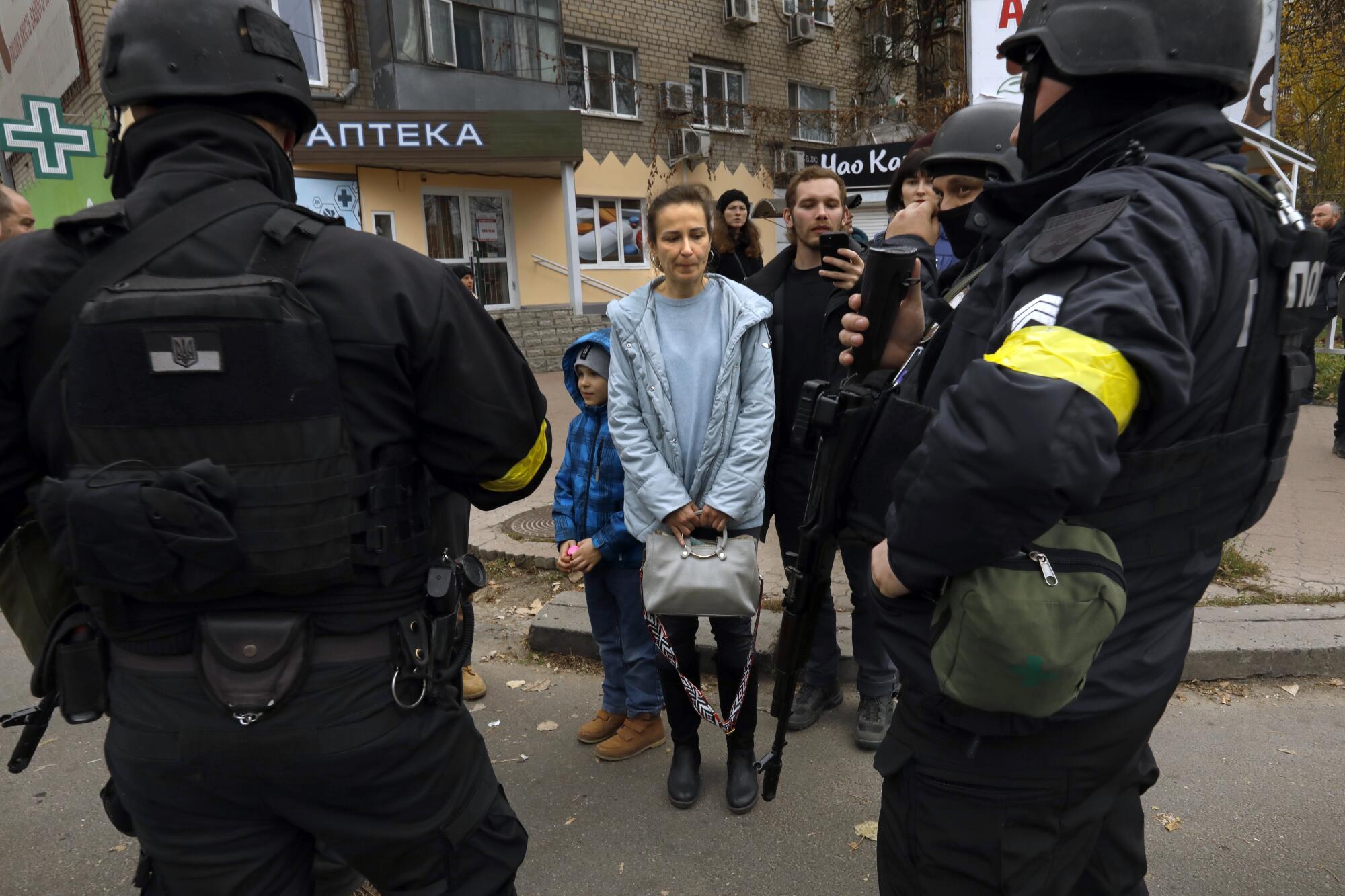
“Anyone who had any connection to the military or law enforcement, journalists, activists,” he said, listing the kinds of Kherson residents who were seized from their homes, often in the middle of the night, for detention and interrogation.
From her home across the street behind a blue gate, 60-year-old Ludmyla Medvedeva would sometimes see hooded detainees being hustled into the compound, she said. And a few times, she witnessed the aftermath. She described seeing one disoriented man in his 40s ejected into the street out front.
“He had been broken somehow,” she said. “He couldn’t even say who he was.”
Neighbors helped him make his way to safety, but she didn’t know what had happened to him.
In the detention center’s courtyard, a framed portrait of Putin lay face-up with the glass shattered. Passing Ukrainians paused to stomp on it, and one leaned forward to dribble spit.
The interior minister, Denys Monastyrsky, said that investigators in Kherson had uncovered 63 bodies bearing signs of torture, but that the search had only begun.
“Many more dungeons and burial places will be uncovered,” he said.
The head of the Kherson prosecutor’s office, Volodymyr Kalyuga, said authorities have identified at least seven torture sites in the city, with more in outlying areas.
“I don’t know how many were tortured to death,” he said. “And the counting will be even more complicated, because some people, after they were released, made it home. And died there.”
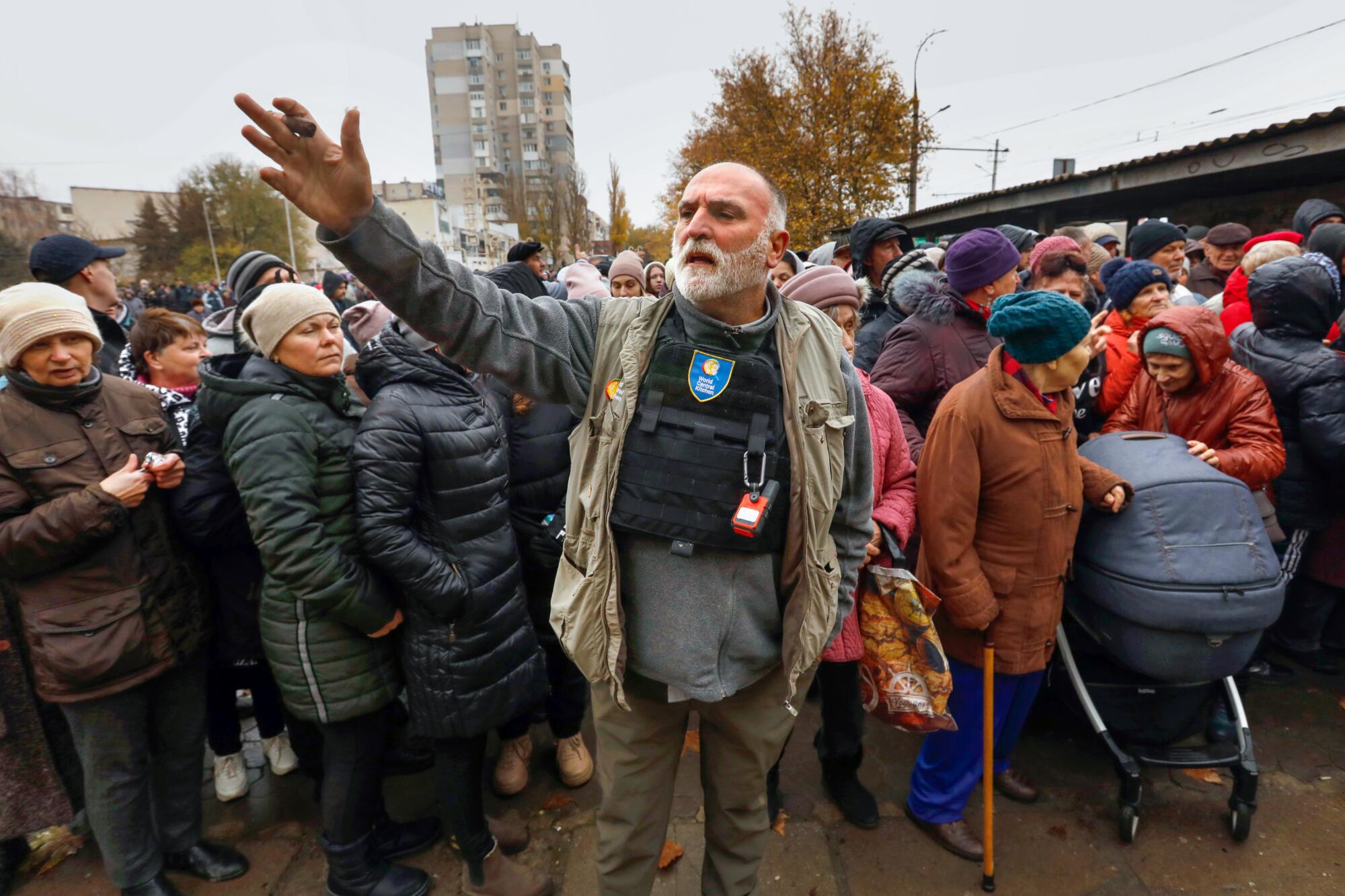
José Andrés, the white-bearded celebrity chef turned humanitarian, was taking a quick break from his work, gazing about as he leaned against a green-painted wall in the center of Kherson. “People are hungry,” he said.
Andrés’ World Central Kitchen was among the first aid groups to push into the just-liberated city, bringing in truckloads of food and supplies. The main railway station was thronged with people when an 18-vehicle caravan arrived Wednesday morning, carrying food and medicine in the first such mass distribution since the Russian retreat.
On Thursday, 1,000 people lined up for about 6,000 bags of food at eight locations. One bag can feed a family of four for one week.
“The hug you get,” said Andrés, “is worth a billion pounds of food.”
During the occupation, and especially in its final days, conditions in the city became increasingly dire. Russian troops smashed key infrastructure as they fled. Ukrainian President Volodymyr Zelensky, in a video address to compatriots, promised the government would move as fast as it could to restore electricity, water, communications, financial services and medical care.
But there was optimism that some semblance of normal life could return once the most urgent infrastructure repairs are made.
Kherson in a sense was lucky, with the city suffering little of the large-scale physical destruction of residential and commercial buildings that has taken place in urban battlegrounds of the east. Its recapture involved heavy fighting in nearby villages as Ukrainian forces pressed their offensive, but the city itself changed hands primarily because Ukrainians managed to all but sever Russian supply lines, forcing the pullback.
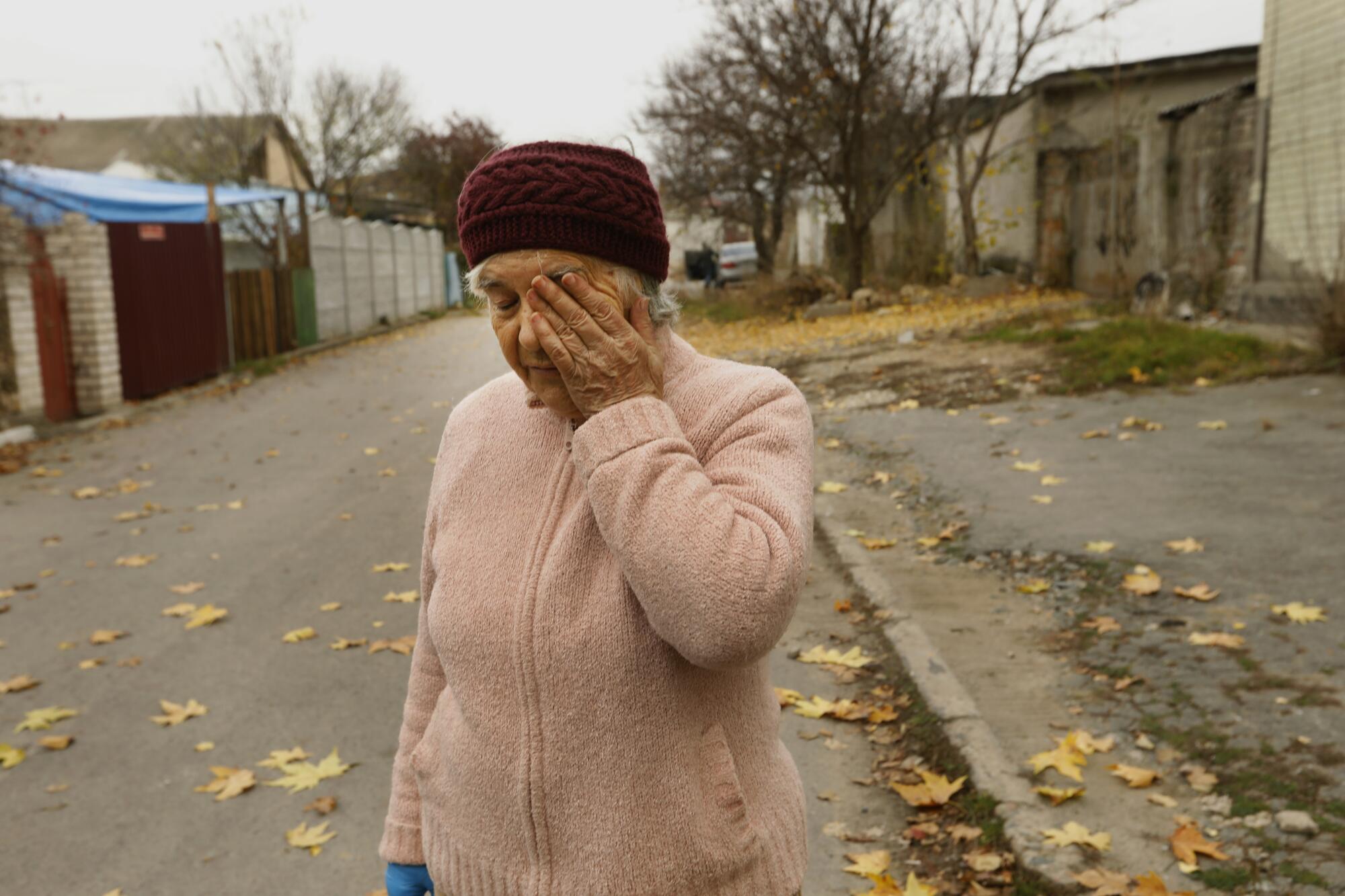
With the Dnieper River as the new front line, Kherson remains within the range of Russia’s big guns, although Western analysts say the reverse is also true, and Moscow’s forces will now seek to protect themselves by pulling artillery batteries back beyond the range of mainly U.S.-provided Ukrainian rocket systems.
Some of the clearest and most immediate dangers, though, were calculatedly sowed in advance.
“They mined everything,” Col. Bodnar Olexandr, the head of the regional department of emergency services, said of the retreating Russians. “They mined buildings. They mined vehicles. They mined bodies.”
Younger people tended toward optimism that the city could recover from a harrowing occupation.
“It’s not as it was, and it won’t be for a long time, maybe,” said 18-year-old Nazar Bolshedvorski, who expects to enlist in the military soon. “But if we stay united, it’ll get better.”
Yuliya Voitu, 13, wearing a huge smile and earmuffs with spangly kitten ears, had wrapped herself in a Ukrainian flag on which she had already collected the signatures of dozens of soldiers.
“I want to keep this as a memory,” she said.
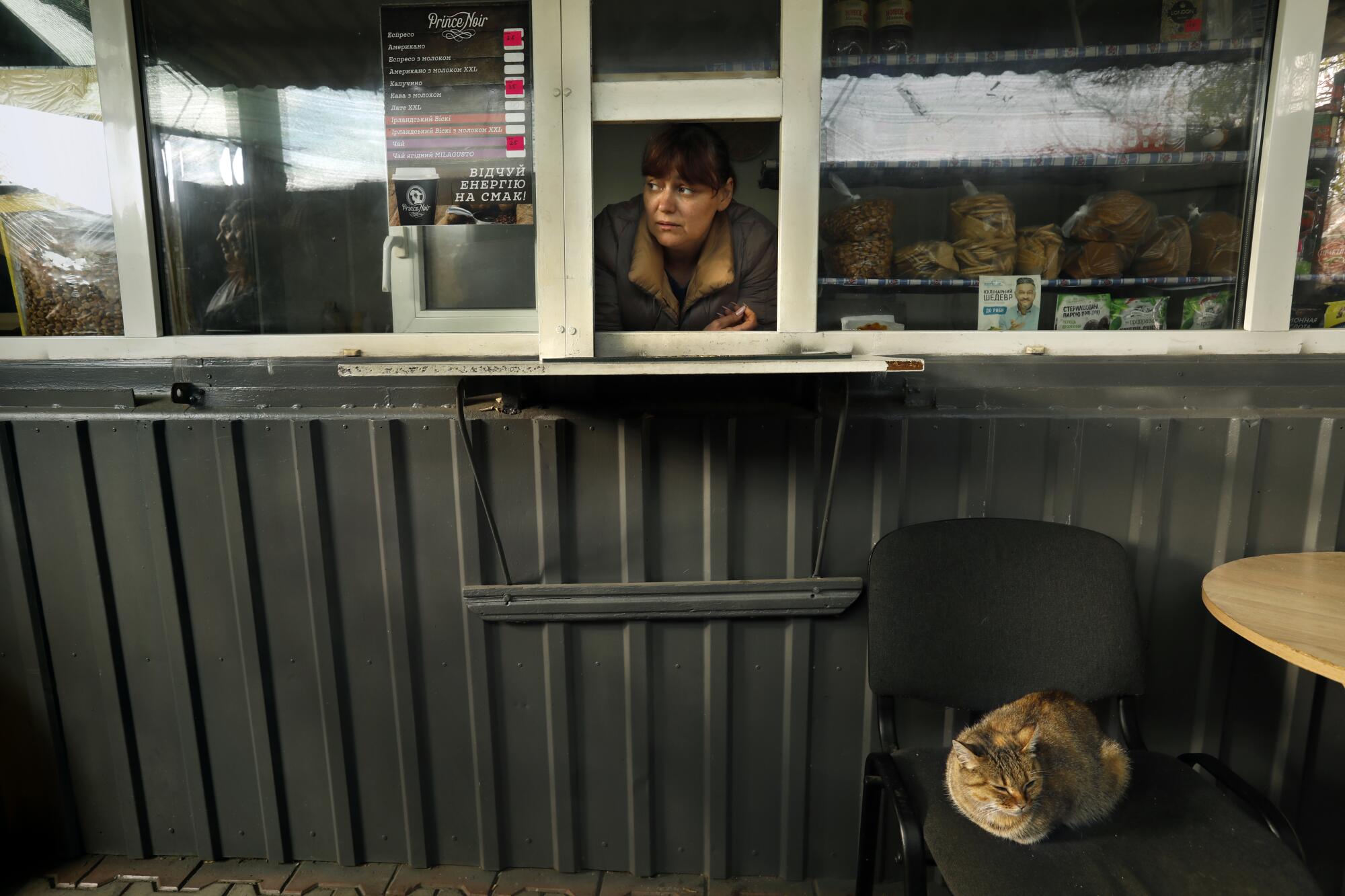
At the other end of the generational spectrum, 83-year-old Raisa Nikityuk, wearing a tailored jacket and what had once been a fashionable mauve cloche, said she believed Kherson would endure. Of herself, she was less certain.
“I was born in war,” she said, “and I’ve had enough of it for this life and another.”
More to Read
Sign up for Essential California
The most important California stories and recommendations in your inbox every morning.
You may occasionally receive promotional content from the Los Angeles Times.
